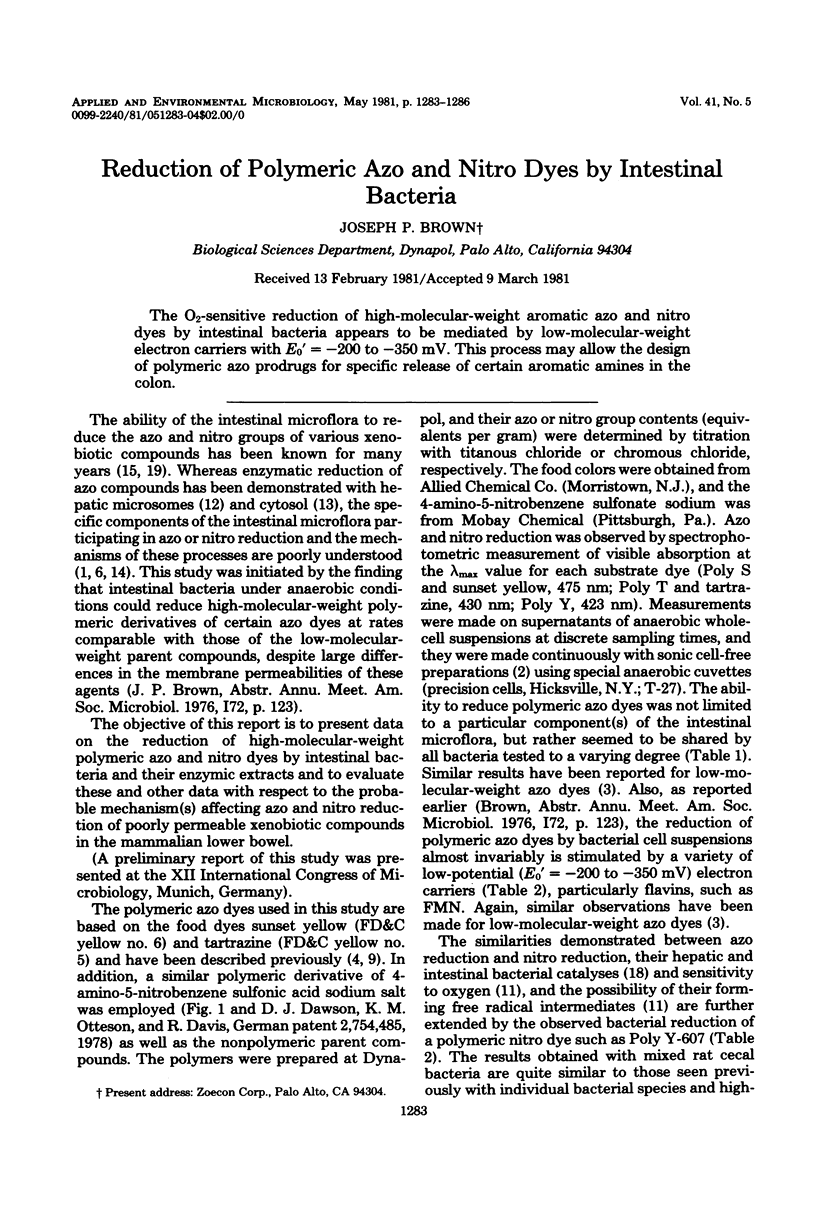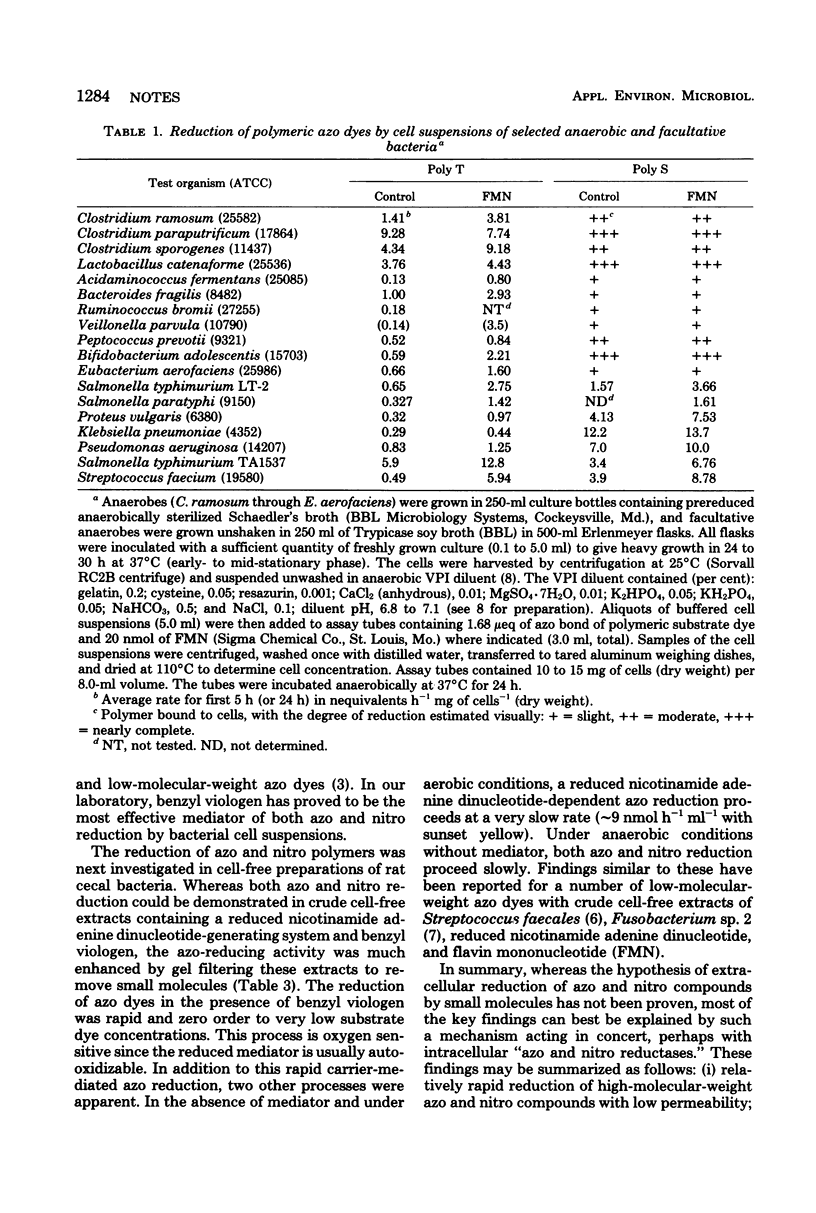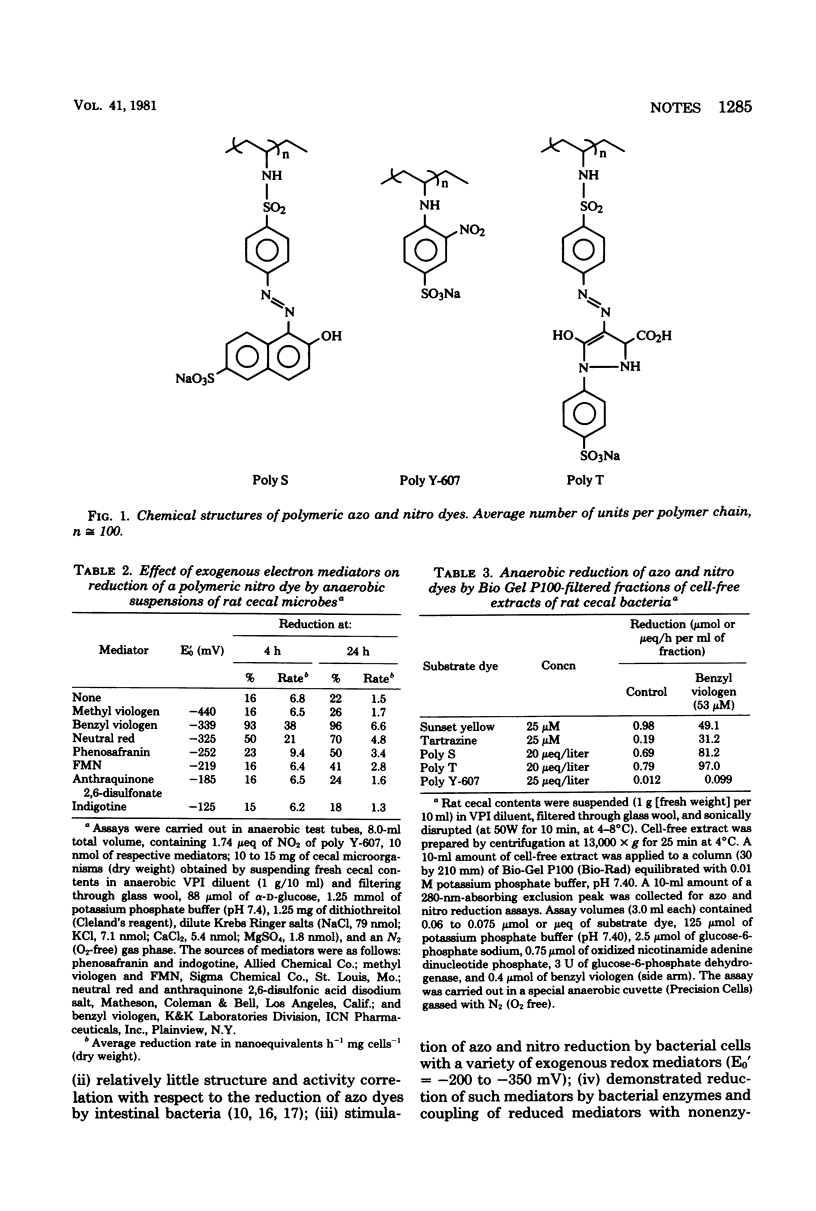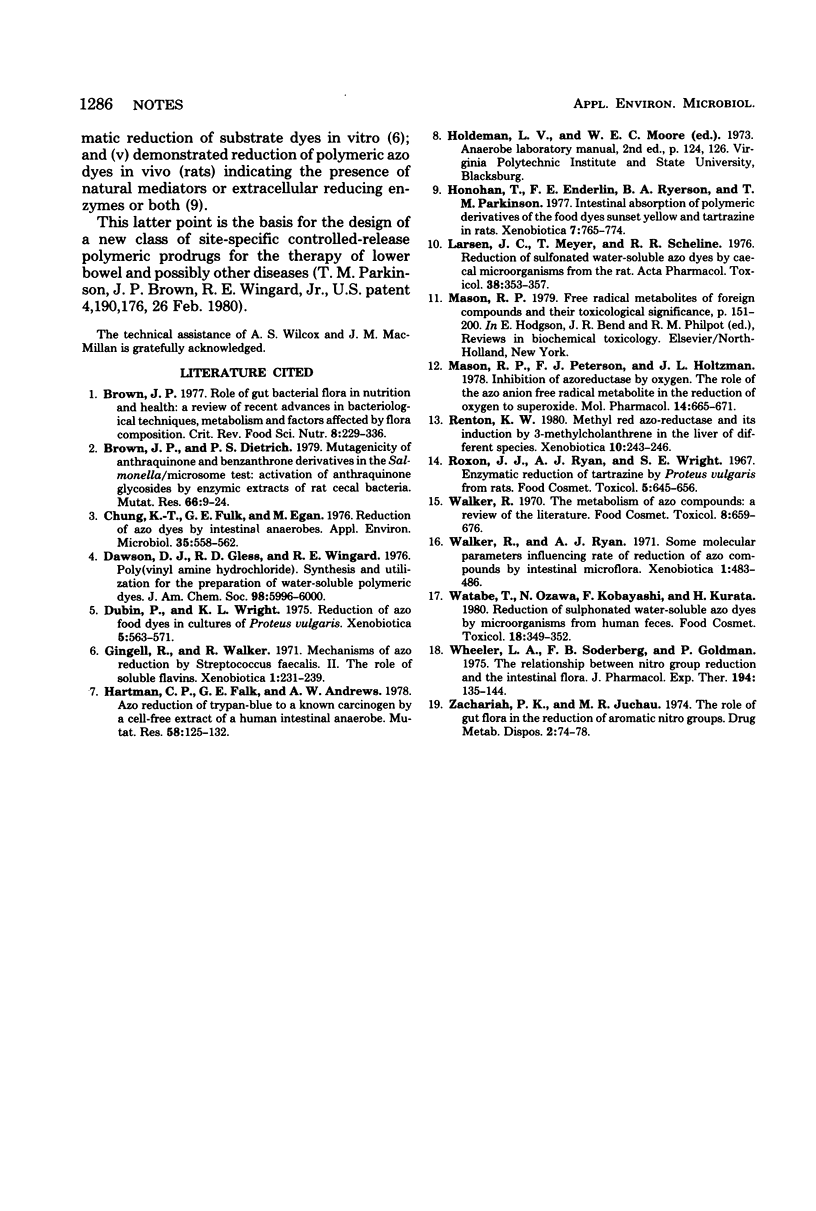Abstract
The O2-sensitive reduction of high-molecular-weight aromatic azo and nitro dyes by intestinal bacteria appears to be mediated by low-molecular-weight electron carriers with Eo′ = −200 to −350 mV. This process may allow the design of polymeric azo prodrugs for specific release of certain aromatic amines in the colon.
Full text
PDF



Selected References
These references are in PubMed. This may not be the complete list of references from this article.
- Brown J. P., Dietrich P. S. Mutagenicity of anthraquinone and benzanthrone derivatives in the Salmonella/microsome test: activation of anthraquinone glycosides by enzymic extracts of rat cecal bacteria. Mutat Res. 1979 Jan;66(1):9–24. doi: 10.1016/0165-1218(79)90003-x. [DOI] [PubMed] [Google Scholar]
- Brown J. P. Role of gut bacterial flora in nutrition and health: a review of recent advances in bacteriological techniques, metabolism, and factors affecting flora composition. CRC Crit Rev Food Sci Nutr. 1977 Jan;8(3):229–336. doi: 10.1080/10408397709527224. [DOI] [PubMed] [Google Scholar]
- Chung K. T., Fulk G. E., Egan M. Reduction of azo dyes by intestinal anaerobes. Appl Environ Microbiol. 1978 Mar;35(3):558–562. doi: 10.1128/aem.35.3.558-562.1978. [DOI] [PMC free article] [PubMed] [Google Scholar]
- Dubin P., Wright K. L. Reduction of azo food dyes in cultures of Proteus vulgaris. Xenobiotica. 1975 Sep;5(9):563–571. doi: 10.3109/00498257509056126. [DOI] [PubMed] [Google Scholar]
- Gingell R., Walker R. Mechanisms of azo reduction by Streptococcus faecalis. II. The role of soluble flavins. Xenobiotica. 1971 May;1(3):231–239. doi: 10.3109/00498257109033172. [DOI] [PubMed] [Google Scholar]
- Hartman C. P., Fulk G. E., Andrews A. W. Azo reduction of trypan blue to a known carcinogen by a cell-free extract of a human intestinal anaerobe. Mutat Res. 1978 Nov;58(2-3):125–132. doi: 10.1016/0165-1218(78)90001-0. [DOI] [PubMed] [Google Scholar]
- Honohan T., Enderlin F. E., Ryerson B. A., Parkinson T. M. Intestinal absorption of polymeric derivatives of the food dyes sunset yellow and tartrazine in rats. Xenobiotica. 1977 Dec;7(12):765–774. doi: 10.3109/00498257709038706. [DOI] [PubMed] [Google Scholar]
- Larsen J. C., Meyer T., Scheline R. R. Reduction of sulphonated water-soluble azo dyes by caecal microorganisms from the rat. Acta Pharmacol Toxicol (Copenh) 1976 Apr;38(4):353–357. doi: 10.1111/j.1600-0773.1976.tb03130.x. [DOI] [PubMed] [Google Scholar]
- Mason R. P., Peterson F. J., Holtzman J. L. Inhibition of azoreductase by oxygen. The role of the azo anion free radical metabolite in the reduction of oxygen to superoxide. Mol Pharmacol. 1978 Jul;14(4):665–671. [PubMed] [Google Scholar]
- Renton K. W. Methyl red azo-reductase and its induction by 3-methylcholanthrene in the liver by different species. Xenobiotica. 1980 Apr;10(4):243–246. doi: 10.3109/00498258009033751. [DOI] [PubMed] [Google Scholar]
- Roxon J. J., Ryan A. J., Wright S. E. Enzymatic reduction of tartrazine by Proteus vulgaris from rats. Food Cosmet Toxicol. 1967 Nov;5(5):645–656. doi: 10.1016/s0015-6264(67)83216-4. [DOI] [PubMed] [Google Scholar]
- Walker R., Ryan A. J. Some molecular parameters influencing rate of reduction of azo compounds by intestinal microflora. Xenobiotica. 1971 Jul-Oct;1(4):483–486. doi: 10.3109/00498257109041513. [DOI] [PubMed] [Google Scholar]
- Walker R. The metabolism of azo compounds: a review of the literature. Food Cosmet Toxicol. 1970 Dec;8(6):659–676. doi: 10.1016/s0015-6264(70)80455-2. [DOI] [PubMed] [Google Scholar]
- Watabe T., Ozawa N., Kobayashi F., Kurata H. Reduction of sulphonated water-soluble azo dyes by micro-organisms from human faeces. Food Cosmet Toxicol. 1980 Aug;18(4):349–352. doi: 10.1016/0015-6264(80)90187-x. [DOI] [PubMed] [Google Scholar]
- Wheeler L. A., Soderberg F. B., Goldman P. The relationship between nitro group reduction and the intestinal microflora. J Pharmacol Exp Ther. 1975 Jul;194(1):135–144. [PubMed] [Google Scholar]
- Zachariah P. K., Juchau M. R. The role of gut flora in the reduction of aromatic nitro-groups. Drug Metab Dispos. 1974 Jan-Feb;2(1):74–78. [PubMed] [Google Scholar]


